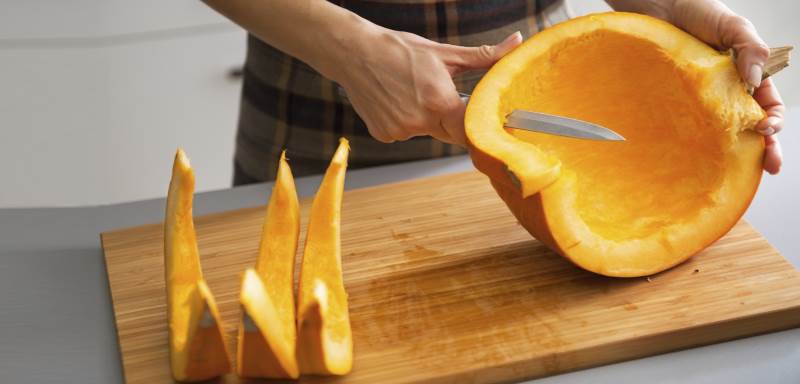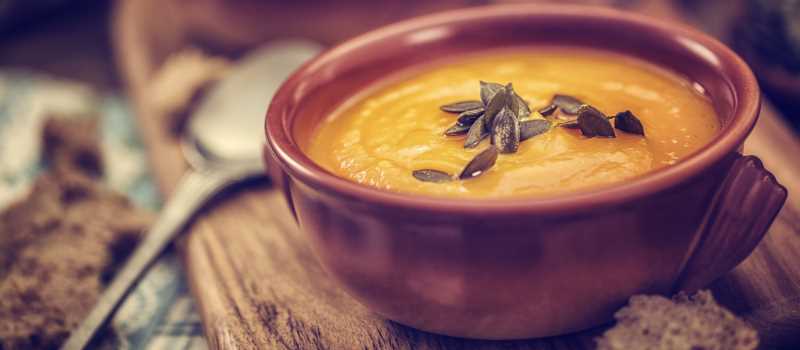Firstly, everything should be stable, so put a damp tea towel under a large chopping board to stop the pumpkin from slipping, (plastic or wooden boards are fine, but don’t use glass as the pumpkin will be more likely to roll whilst you are cutting). After you’ve washed your pumpkin, take a very large, sharp chef’s knife and pierce through the skin at a point on the top (you may need to use a rolling pin or hammer to get the knife in if the skin is particularly thick).
Carefully cut through the pumpkin all the way down to the bottom (using the heel of your hand to press down on the top) then turn it round and cut down the other side until it is split into half and you have two pieces.

Next, scoop out all of the seeds and any stringy bits using a large spoon (remembering to keep those mega-nutritious seeds for roasting!) and cut it into quarters or wedges.

Then use a sharp paring knife to cut off the skin (unless you are planning to roast your pumpkin, in which case you can leave the skin on).

Once you have cut your pumpkin up, you can store it in an airtight container in the fridge, where it will keep for around one week.
Now that you have the preparation mastered, there's no end to the range of dishes you can make - Why not have a go at some of our pumpkin recipes to get you started?
Cooking ideas
Now that you have your lovely golden cubes of pumpkin - what can you do with them? Pumpkin is fantastic in both sweet and savoury dishes. From classics such as pumpkin soup, pumpkin pie or simply roasted to more unusual dishes including pumpkin ravioli, pickle, waffles or biryani. It is an extremely versatile, tasty addition to a healthy diet. As well as featuring as the main ingredient in many baking recipes, grated pumpkin can also be added to more or less anything; breads, muffins, cereal bars and cookies to name but a few, for that all important beta-carotene boost.

Pumpkin for babies
Pumpkin is wonderful for making into baby puree; not only is it packed with iron, calcium and vitamins vital for growth and development, it is also perfect for mixing with perhaps less-popular veggies such as courgette or green beans due to its naturally sweet flavour. It also marries well with rice, fruits, meats and fish and is a great finger-food once baby is ready for solids (at around 10 months old). Try freezing your baby purees into ice-cube trays for convenience.





 Looking for our products in a store near you?
Looking for our products in a store near you?
